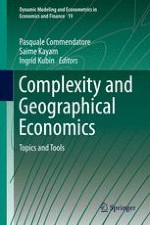2015 | OriginalPaper | Buchkapitel
Semiparametric Spatial Autoregressive Geoadditive Models
verfasst von : Roberto Basile, Saime Kayam, Román Mínguez, Jose María Montero, Jesús Mur
Erschienen in: Complexity and Geographical Economics
Aktivieren Sie unsere intelligente Suche, um passende Fachinhalte oder Patente zu finden.
Wählen Sie Textabschnitte aus um mit Künstlicher Intelligenz passenden Patente zu finden. powered by
Markieren Sie Textabschnitte, um KI-gestützt weitere passende Inhalte zu finden. powered by
